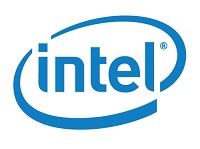
Introduction
The 2XXX Second Generation of the Intel Core Processor Family took off this past year with many early adopters pleasantly surprised by the abundance of speed, updated technologies, and better graphics integration. Here at TechwareLabs we had the pleasure of reviewing the i5-2500K and i7-2600K last year with future prospect of greater economical choices to come in Q1 2012. The Sandy Bridge-E i7-3800 Desktop series takes on many of the 2nd Gen i7-2XXX series features with a boost in base clock speed, cache, and thermal specification. Continuing the 32nm production process and the same 130-watt TDP of its two big brothers it will also require the new LGA2011 socket. The i7-3820 differences include increased PCI-Express lanes, quad channel memory support, and increased memory bandwidth. The major deficit of this model is its four processing cores rather than six (eight threads rather than 12 with hyper-threading) found in this pricier big brother models. This edition also does not include on-board graphics. The mulitplier is locked on the i7-3820 but you can still overclock the baseclock and adjust up to a maximum multiplier of 43 (maximum of four speed bins over stock). We speculate the decisions to reduce cores, limit speed bins, and drop the embedded Intel® HD Graphics were to keep the price point lower and focus on users that would be utilizing discrete graphics and more single-threaded applications. For a rundown of Sandy Bridge and the i5-2600K CPU, check out our earlier in depth review of the 2600K.
–~~~~~~~~~~~~–
2nd Gen Intel® Core i7-3XXX Processor Family
- MASSIVE PCIE GRAPHICS BANDWIDTH
- Provides up to 40 lanes of PCIe bandwidth for PCI Express devices, which can include graphics cards, storage controllers, and additional LAN devices. This processor has more than 2X the PCIe lanes vs. other 2nd Generation Intel Core desktop processors.
- FOUR CHANNEL INTEGRATED MEMORY CONTROLLER
- An integrated memory controller with four channels of DDR3 1600 MHz offers memory bandwidth up to 51.2 GB/s. Combined with the processor’s efficient prefetching algorithms, this memory controller’s lower latency and higher memory bandwidth delivers amazing performance for data-intensive applications.
- INTEL TURBO BOOST TECHNOLOGY 2.0
- Dynamically increases the processor’s frequency as needed by taking advantage of thermal and power headroom when operating below specified limits. Get more performance automatically, when you need it the most.
- INTEL HYPER-THREADING TECHNOLOGYToday’s Intel Hyper-Threading Technology (Intel HT Technology) delivers thread-level parallelism on each processor resulting in more efficient use of processor resources—higher processing throughput—and improved performance on the multi-threaded software of today and tomorrow.
- INTEL SMART CACHE
- This large last-level cache enables dynamic and efficient allocation of shared cache to all cores to match the needs of various applications for ultra-efficient data storage and manipulation.
- INTEL ADVANCED VECTOR EXTENSIONS (INTEL AVX)
- Intel AVX is a new 256 bit instruction set extension to SSE and is designed for applications that are Floating Point (FP) intensive. Intel AVX improves performance due to wider vectors, new extensible syntax, and rich functionality. This results in better management of data and general purpose applications like image, audio/video processing, scientific simulations, financial analytics and 3D modeling and analysis.
- Intel Socket LGA 2011
- New pad design to accommodate additional features added over the prior socket design of 1155.
Closer Look
The processor we have for review today is the Intel® Core™ i7-3820 processor. It is a 4 core, 8 thread 32nm CPU with a stock speed of 3.60 Ghz featuring 10MB of L3 Smart Cache and a maximum Turbo frequency of 3.80 Ghz. Missing in this edition is the integrated Intel HD Graphics! But the increased memory bandwidth, quad channel memory support, and a built-in 40-lane PCI Express 3.0 controller more than makes up for the lack of the embedded graphics option.
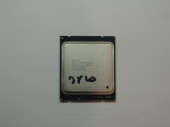 |
…. | 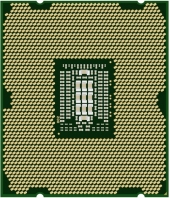 |
| . | ||
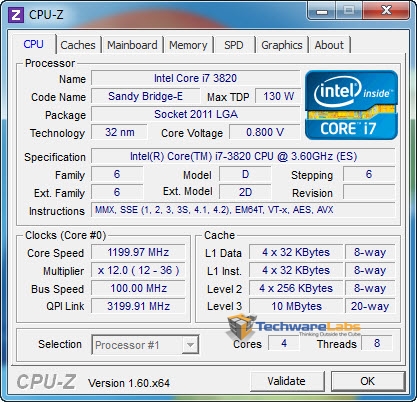 |
…. | |
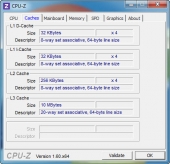 |
||
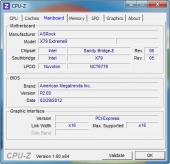 |
||
CPU-Z information showing Intel Core i7 3820, cache specifications, and motherboard model.
CPU Specifications
| Intel® Core™ i7-3820 Processor (10M Cache, 3.60 GHz Stock) | |
| Status | Launched |
| Launch Date | Q1’12 |
| Processor Number | i7-3820 |
| # of Cores | 4 |
| # of Threads | 8 |
| Clock Speed | 3.6 GHz |
| Max Turbo Frequency | 3.8 GHz |
| Intel® Smart Cache | 10 MB |
| Bus/Core Ratio | 44 |
| Instruction Set | 64-bit |
| Instruction Set Extensions | SSE4.2, AVX |
| Embedded Options Available | No |
| Lithography | 32 nm |
| Max TDP | 130 W |
| Recommended Customer Price | $294-$305 |
| Memory Specifications | |
| Max Memory Size (dependent on memory type) |
64 GB |
| Memory Types | DDR3-1066/1333/1600 |
| # of Memory Channels | 4 |
| Max Memory Bandwidth | 51.2 GB/s |
| ECC Memory Supported | No |
| Integrated Graphics | No |
| PCI Express Revision | 2.0 |
| # of PCI Express Ports | 10 |
Test Setup
All tests were performed on the following system featuring the latest ASRock X79 Extreme9 motherboard, drivers, and Windows Updates available at time of testing.
| CPU | Intel Core i7 3820 @ 3.60GHz |
| Heatsink | CORSAIR H100 with Push/Pull Cooling |
| Motherboard | ASRock X79 Extreme9 |
| Chipset | Intel® X79 Chipset |
| Graphics card | AMD ATI 6950 |
| RAM | 4x4GB GEIL EVO Corsa DDR3-2133 |
| Sound | SB Recon3Di |
| SSD | 120 GB Intel 500 series SSD |
| Power Supply | OCZ ZX850W Gold |
Pictures of Test Rig:
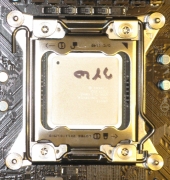 |
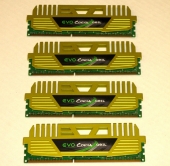 |
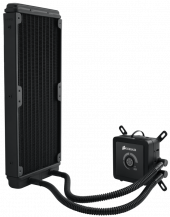 |
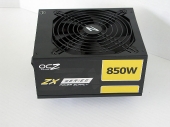 |
CPU Benchmarks
The Intel® Core™ i7-3800 Desktop Processor series is the middle man choice with just enough enhancements to utilize some of the new goodies afforded by the new LGA2011 platforms including the X79 chipset base motherboard we have for our tests today. We rounded up our trusty collection of benchmark software that will stress the Intel® Core™ i7-3820 Processor and give us some data which will will interpret into useful comparable information. Keep in mind the results provided individual benchmark software are synthetic and are only able to assess the relative performance of the given system. The results of each test should be considered a reasonable evaluation of performance, and are better used to compare the performance of different systems. The numbers produced by benchmarking do not prove the efficiency, speed, and power of the processor being tested; it is much more useful and preferred to compare the results from this processor to another make/model of processor to show the differences in efficiency, speed, and power.
The best benchmark suites provide baseline data and comparison data to allow us to present you with actual information instead of just numbers. Keep in mind that in some of the following tests lower numbers are better (for example latency, time to complete an operation, etc) and in some test higher numbers are better (MB/s, scores, GFLOPS, etc). But have no fear, we will guide you through the results and point out anomalies and interesting results. Todays testing will include the following benchmarking software: AIDA64 v1.50.1230, PCMark Vantage x64, PerformanceTest v7.0, and SiSoftware Sandra 2012.
The Intel® Core™ i7-3820 is a partially locked processor meaning we are limited to a range of multipliers and a maximum of four speed bins over stock (up to 4.3GHz) when overclocking. Combined with the adjustable base clock up to 125MHz we can still get a decent overclock from the i7-3820. With the ASRock X79 Extreme9 motherboard we will overclock our i7-3820 CPU as high as possible even with these limitations. First all benchmarks will be run with the multiplier set to the default x36 which means the CPU will run at stock 3.6 Ghz (up to 3.9 Ghz turbo). This will be considered the baseline for later comparisons to over-clocked benchmarks.
Benchmarks – Stock 3.60 Ghz
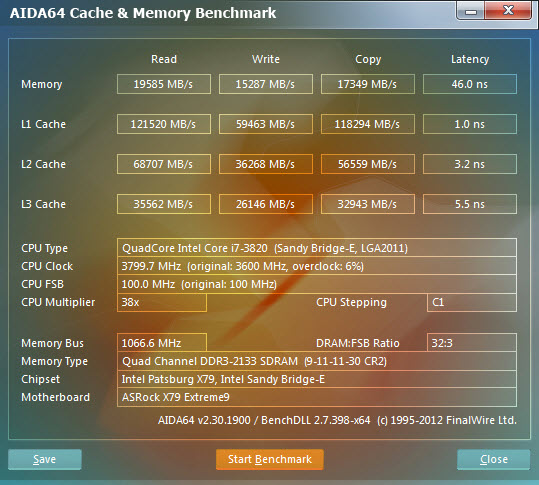
AIDA64 Extreme v2.30.1900
AIDA64 Extreme Edition is a streamlined Windows diagnostic and benchmarking software which provides a wide range of features to assist in overclocking, hardware error diagnosis, stress testing, and sensor monitoring. It has unique capabilities to assess the performance of the processor, system memory, and disk drives. For our purposes today, AIDA64 is able to test the limits of the CPU with a collection of tasks such as AES data encryption and gives us performance based on numbers. These numbers allow us to compare the Intel® 2nd Gen Core i7-3820 to other processors available on the market. The 5 CPU tests provided in AIDA64 are Queen, PhotoWorxx, ZLib, AES, and Hash.
CPU Queen focuses on a chess related problem, solutions for the classic “Queens problem” on a 10 by 10 chessboard (more info here), using integer MMX, SSE2 and SSSE3 optimizations and focuses on the branch prediction capabilities and the misprediction penalties of the CPU. A CPU with the shorter pipeline and smaller amount of mispredictions will score higher. Basically this test is a number crunching math problem for the CPU.
CPU PhotoWorxx performs the following tasks on a very large RGB image: fill, flip, rotate left, rotate right, random color fill, color to b&w, difference, and crop. These are common tasks used during digital photo processing. This benchmark stresses the integer arithmetic and multiplication execution units of the CPU and also the memory subsystem.
CPU ZLib is an integer benchmark which measures combined CPU and memory subsystem performance through the public ZLib compression library, a software library used for data compression.
CPU AES is an integer benchmark measuring CPU performance using AES (Rijndael) data encryption. The 2600K should perform extremely well in this test due to hardware support and the New AES instruction set available in the Intel Core processors family.
CPU Hash is another integer benchmark measuring CPU performance using the SHA1 hashing algorithm. The code behind this benchmark method is written in Assembly, and it is optimized for every popular AMD, Intel and VIA processor core variants by utilizing the appropriate MMX, MMX+/SSE, SSE2, SSSE3, or AVX instruction set extension. In this benchmark every thread is working on independent 8 KB data blocks, and the MMX, SSE2 and SSSE3 optimized calculation routines implement the latest vectorization idea of Intel.
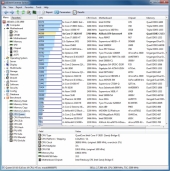 |
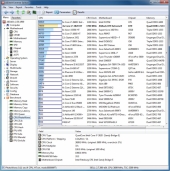 |
| CPU Queen – 4th | CPU PhotoWorxx – 2nd |
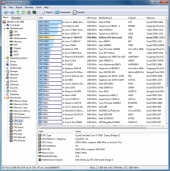 |
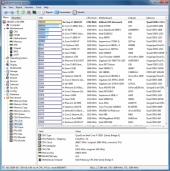 |
| CPU ZLib – 5th |
CPU AES – 1st |
 |
|
| CPU Hash – 8th |
|
Results all round proving the 2nd Gen Core i7-3820 CPU is up to the tasks we set before it. It would be interesting to see how close the 3820 scores in comparison to the 3960X and 3930K…
PCMark Vantage x64
This benchmark is a series of tests requiring the CPU, memory sub system, caches, GPU and more.
A PCMark score is a measure of your computer’s performance across a variety of common tasks such as viewing and editing photos, video, music and other media, gaming, communications, productivity and security. From desktops and laptops to workstations and gaming rigs, by comparing your PCMark Vantage score with other similar systems you can find the hardware and software bottlenecks that stop you getting more from your PC.
 |
 |
| How the test was setup to run | Results – PCMark 5180 |
Another successful PASS for the i7-3820. The results of PCMark Vantage are incredibly useful when comparing systems and also comparing over-clocking performance increase as we will see later on…
PerformanceTest v7.0
Another performance benchmark suite in our arsenal is PerformanceTest from PassMark. PassMark PerformanceTest allows you to objectively benchmark a PC using a variety of different speed tests and compare the results to other computers. We will use this suite to show the performance of the i7-3820. This benchmark will also provide a clear indication of performance increases gained from overclocking later in this article.
 |
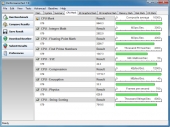 |
| PassMark Rating – 3318.9 vs 2635.9 [i7-2600K stock] |
CPU Rating – 9940.3 vs 7102 [i7-2600K stock] |
The 2nd Gen Core i7 3820 is more than capable and it shows. Scores provided for the i7-2600K are a rudimentary comparison. Due to differences in the chipset architecture, memory channel support, and system components in general we cannot perform a direct numbers comparison. Basically we can conclude that the stock i7-3820 did score higher than the i7-2600K.
SiSoftware Sandra 2012
The Sandra suite gives us a more detailed look at the processor performance in particular areas of interest. There are 5 processor benchmarks of interest for our purposes today.
The table below has 5 rows, 1 for each test; each row has 3 graphs. The left graph is the combined result, the center graph compares the 2 components tested, the last right chart is ‘Performance vs Speed’ best results of this graph are furthest to the right and nearest the top of the chart.
Overall the results translate as follows: higher results or longer bars equal better performance, with the exception of the Multi-Core Efficiency latency test in row 3 highlight in orange (bottom half of the image labeled ‘Inter-Core Efficiency’).
Processor Arithmetic: Benchmarks the ALU and FPU processor units. Shows how your processors handle arithmetic and floating point instructions in comparison to other typical processors.
Processor Multi-Media: Benchmark the SIMD processor units. Shows how your processors handle multi-media instructions and data in comparison to other typical processors.
Power Management Efficiency: Benchmark the power management efficiency of the processors. Shows how efficient the power management of your processors is in comparison to other typical processors.The ability of the processors to step-down in frequency and voltage at different workloads is measured. The more a processor steps down in both frequency and voltage the better the score at the specific workload. The test stops when the workload is too great the processor even at 100% efficiency.
Multi-Core Efficiency: Benchmark the multi-core efficiency of the processors. Shows how efficient the processor cores and their inter-connects are in comparison to other types to other typical processors. The ability of the cores to process data blocks and pass them to another core for processing (producer-consumer paradigm) of different sizes and different chain sizes is measured. The efficiency of the inter-connect between cores is thus benchmarked; however, the number of cores (and processors) also counts as more data buffers can be processed simultaneously (aka “in flight”).
Cryptography: Measures the cryptography efficiency of the processor units: encryption, decryption and hashing. Shows how your processors handle cryptographic operations in comparison to other typical processors.
 |
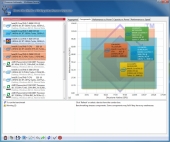 |
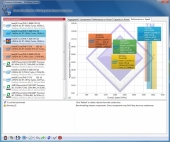 |
| Processor Arithmetic | ||
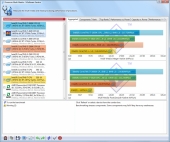 |
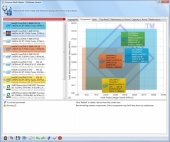 |
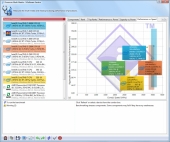 |
| Processor Multi-Media | ||
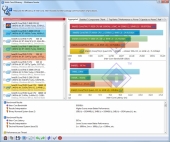 |
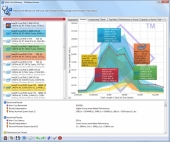 |
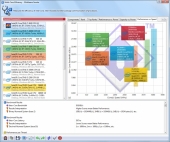 |
| Multi-Core Efficiency | ||
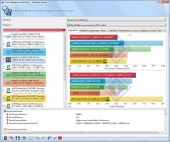 |
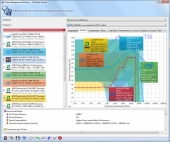 |
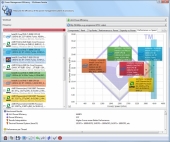 |
| Power Management Efficiency | ||
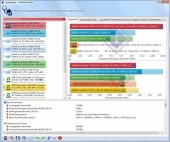 |
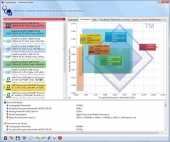 |
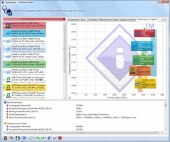 |
| Cryptography | ||
Benchmarks – Overclocked to 4.6 Ghz
Although the i7-3820 is a partially locked processor, we can still overclock by four speed bins for a maximum of 4.3GHz. Add to that the increase of base clock (BCLK) from 100Mhz original to 125Mhz for a total theoretical turbo of up to 4.87Ghz. Every batch or even a single unit of production is unique and will respond slightly differently to overclocking. In our case a mulitplier of 37 with a base clock of 125Mhz was the highest stable clock achieved. Therefore our overclocked benchmarks will be run at 4.625Ghz.
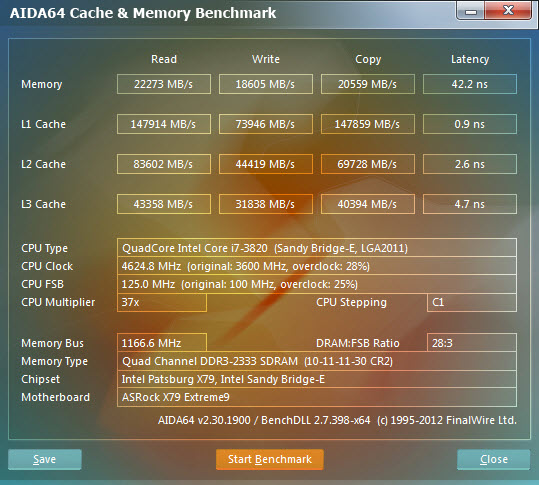
AIDA64 v1.50.1230
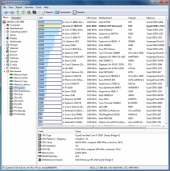 |
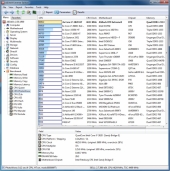 |
| CPU Queen – 2nd |
CPU PhotoWorxx – 1st |
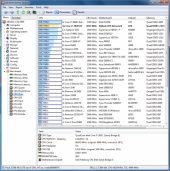 |
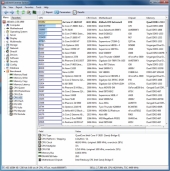 |
| CPU Zlib – 2nd |
CPU AES – 1st |
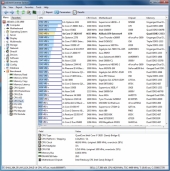 |
|
| CPU Hash – 4th |
|
In our AIDA64 benchmarks we find improvements in scores in all 5 tests. Results in all tests move the i7-3820 up the list, however the over-clocked 2600K maintains a slight advantage over the the OC’d 3820 in all tests.
PCMark Vantage x64
 |
 |
| How the test was setup to run | Results – PCMarks 5833 vs PCMarks 5180 [Stock] |
The .
PerformanceTest v7.0
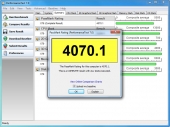 |
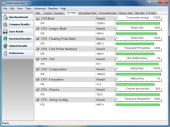 |
| PassMark Rating – 4070.1; up from 3318.9 stock |
CPU Rating – 12289.5; up from 9940.3 stock |
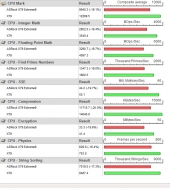 |
|
|
Stock CPU comparison
|
|
Overall we see a decent increase in performance indicated by the PerformanceTest suite, not bad for a ~28% CPU overclock.

.
Conclusion
The attractive sub-$300 price tag of the i7-3820 helps fill the void between extreme speed and price of the i7-3960X and still relatively high-priced i7-3930K. The scarcity and inconsistent pricing of the i7-3930K along with the insanely priced i7-3960X sent many potential adopters into a hold pattern, awaiting a more budget friendly unit for the LGA2011 platform. This i7-3820 model fits the bill. With enough speed and spec enhancements to justify a platform upgrade, the i7-3820 opened up the new X79 and X77 chipset base motherboards as viable and budget friendly options. Continuing the motto of “visibly smart performance”, the i7-3820 is an excellent addition to create a well-balanced lineup for the 2nd Gen Core family. The i5 is the balance of price, performance, and features while the i7 series is the pro choice for the high end enthusiast. Now within the i7 series there is a great variety of options ranging from the sub $300 to $1000+ CPU option such as the 3960X. Today’s review CPU, the i7-3820 @ 3.6 GHz stock currently sells for $299.99 at NewEgg.com which is a fair price for this very good performance processor.
xxx
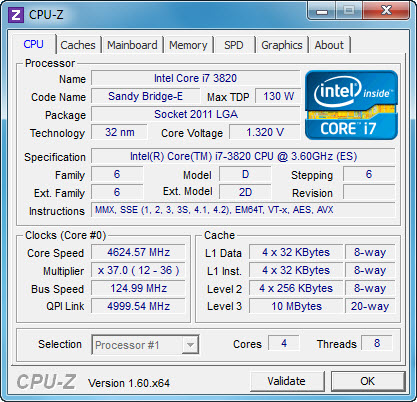



Here is an overview of an Intel based Dell PowerEdge R720 : https://www.youtube.com/watch?v=wxkjrQ4UbJk